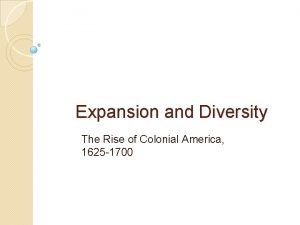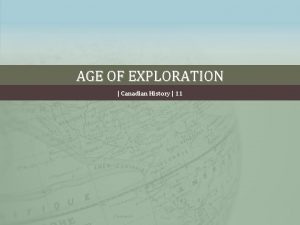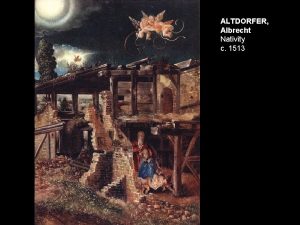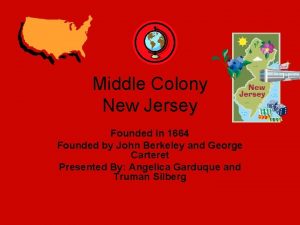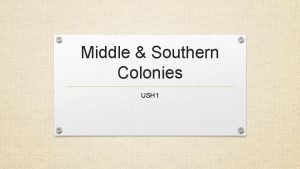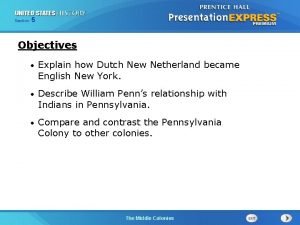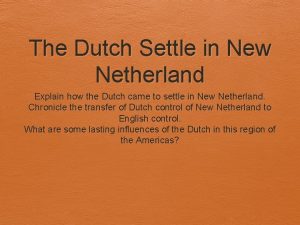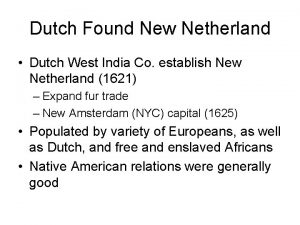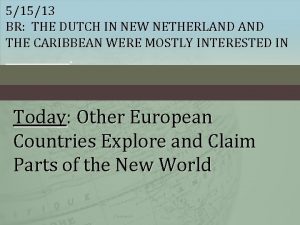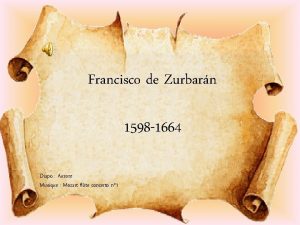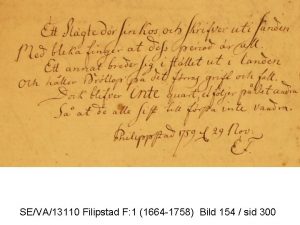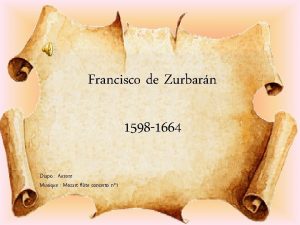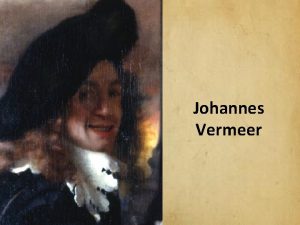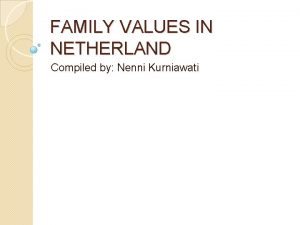The Story of New Netherland 1609 1664 CS


















































- Slides: 50

The Story of New Netherland 1609 -1664 CS 150

New York State Social Studies Standards • STANDARD I – HISTORY OF THE UNITED STATES AND NEW YORK: Students will use a variety of intellectual skills to demonstrate their understanding of major ideas, eras, themes, developments, and turning points in the history of the United States and New York.

NYC ELA Performance Standards • E 1 c. Read and comprehend informational materials. • E 2 a. Produce a report of information. • E 2 b. Produce a response to literature. • E 5 a. Respond to non-fiction, poetry, and drama using interpretive and critical processes.

Performance Objectives • Students will understand the development and historical impact of New Netherland on the history of New York and the United States. • Students will complete one of four projects based on the information provided in the presentation, as well as information researched in textbooks, trade books, reference materials and the Internet.

Beginnings of the Colony (1492 -1609) • Since the 1400 s, European explorers have searched for a westward passage to Asia. • Columbus, Cartier, Vespucci and Verrazzano all tried…and failed. • In 1609, Henry Hudson was hired by the Dutch West India Company to find a “Northwest Passage” through North America to Asia.



The Establishment of New Netherland • Hudson did not find the Northwest Passage, but he did claim the land around New York harbor for the Netherlands. • The Dutch West India Company saw this land as an opportunity to establish a trading post for beaver skins in North America.

Establishment, cont. • In 1614, the first group of colonists settle near present-day Albany, at Fort Orange. • Problems at the colony forced the Dutch to abandon Fort Orange in 1624, for a new capital down the river – New Amsterdam. The entire colony was called New Netherland.

• In 1626, Peter Minuit, director-general of New Netherland, made an agreement with the Lenni. Lenape, guaranteeing Dutch use of all of Manhattan Island in exchange for various gems and items. • The picture on the left is the letter Minuit’s secretary wrote to his superiors in the Netherlands. Called the Schaghen Letter, it is the only evidence we have of the “sale” of Manhattan island.

Who were the Dutch? • The Dutch came from The Netherlands, a seagoing nation in Northern Europe. • Dutch power reached its height in the 1600 s, when they established trading colonies in Asia, Africa, Brazil, the Caribbean and North America. • New Netherland would be the North American arm of an empire that traded in spices, sugar, coffee, furs and African slaves. • The Dutch were known as a hard-working, orderly people who tolerated diversity.


What did New Netherland look like? • New Netherland stretched up the Hudson River to present-day Albany and into New Jersey, Connecticut and Delaware. • The capital city was New Amsterdam, but other settlements included Haarlem, Brueckelen, and Vlissingen. • Outside the towns, land was divided into huge farming estates called patroons. • The largest patroons include Rensselaerwyck, and the estate of Jonas Bronck (the Bronck’s).

What was the government in New Netherland? • New Netherland was a corporate colony of the Dutch West India Company. • Directors-General governed the colony on behalf of the company. • They were responsible for keeping order, maintaining trade, and dealing with Native American tribes. • Colonists complained often, both to the Company and to the Dutch government.

Directors-General of New Netherland Peter Minuit 1626 -1632 Wouter van Twiller 1633 -1638 Willem Kieft 1638 - 1647 Pieter Stuyvesant 1647 -1664


Who came to New Netherland? • The West India Company had a hard time recruiting Dutch settlers to New Netherland because of better opportunities elsewhere. • In response, the company allowed anyone willing to work to settle in the colony. • Promises of land riches drove the new settlers to the colony.

Who came to New Netherland? Cont. • By 1664, the Dutch made up only 50% of the population of New Netherland. The rest included English, French, Italian, German, Spanish, Portuguese, Polish and African. • Christians of all denominations, as well as Jews and atheists thrived in the colony. • The first Jews arrived in 1654 and were allowed to stay— against the Director-General’s wishes.

“…this colony will soon become a babble of confusion. We have here Papists, Mennonites and Lutherans among the Dutch, also many Puritans or Independents and many atheists and various other servants of evil…it would create still greater confusion, if the obstinate and immovable Jews came to settle here…so wild a country, with so many loose people…” -- Pieter Stuyvesant, about 1654

How did colonists make a living? • The primary business of the colony was beaver skins. Skins were obtained by trading with Native Americans at Fort Orange. • These skins would then be shipped to New Amsterdam, where large ships would transport them for sale in Europe. • Beside furs, many colonists worked in various trades in the city, such as blacksmiths, barrel makers, etc. • Farms were found in small plots in the city, as well as large rented farms in the patroons.

What was life like for a colonist? • New Netherland was a society divided into social classes: The rich merchants and landowners, the tradesmen, the farmers, workers, and slaves. • Even for the very rich, life in the colony was a hard existence. In the city, people lived in cramped houses like in the Netherlands. • Lack of services made it impossible to keep as clean as in Europe.

Colonial Life, Cont. • Clothes, tools and other equipment were made by hand. There was no running water, electricity, or health system. • Most Dutch colonists made items like those found in their home country, such as Dutch doors, windmills and Delft tiles.

Life Outside New Amsterdam • For families living in the country, life was even more difficult. • Besides the normal problems of 17 th century farm life, rural farmers had to deal with the constant threat of native attacks, making relationships with Native Americans that much more important.

Case Study: Schools in New Amsterdam • The first school was established in 1638 by Adam Roelantsen. It exists today as the Collegiate School. • By the 1650’s, schools could be found as far as present-day Albany. • There were both private schools and schools supported by the West India Company.

Report of the Board of Accounts in New Netherland. 1644 Estimate of the Expenses which the [West India] Company would have to bear in New Netherland for the following persons, to be rationed at their own expense : 1 director, whose monthly salary should be fl. 250 to board himself, is yearly ………………. …fl. 3, 000 1 clergyman, a fl. 120 per month ……. . . . ……… 1, 440 1 schoolmaster, precentor and sexton, a fl. 30. . . . … 360

Pictures of Colonial Life

How did the Dutch get along with Native Americans? • At first, the Dutch tried to maintain good relations, because of the need for beaver skins. • As more settlers moved in, the colonists took more advantage of Native tribes to gain more land.

Native Americans, cont. • Colonists often tricked tribes into warring with each other, as well as spread diseases such as smallpox. • Relations between the two groups worsened in 1643, when Willem Kieft attempted to tax Lenape tribes in Manhattan, causing a brutal yearlong war known as “Kieft’s War. ”

“I value the blood of one Christian more than that of a hundred Indians. ” -- Pieter Stuyvesant

What was slavery like in New Netherland? • The first African slaves arrived from Angola in 1626. • The Dutch had established a rich trade in slaves by the 1600 s. • Slaves were used in construction, building roads, as dockhands, on farms and patroons, and as household servants. • Slaves were considered property; they could not move around or go where they pleased.

What was slavery like in New Netherland? continued • In New Amsterdam, slaves were often “rented” out to colonists in exchange for a fee, of which the enslaved person received a small amount. Some Africans bought their freedom this way. • The Dutch offered slaves “half freedom. ” Africans could work small farms outside of New Amsterdam, but paid fees to their master and were forced to defend the colony in time of war.

What was slavery like in New Netherland? continued • Even freed Africans had restrictions. Africans could not be out late at night. They were not allowed in the city after a certain hour, and they had to live in certain areas. • Recently, archaeologists have uncovered an African burial ground in Manhattan, proof that colonial society forced Africans to even bury their dead in a separate location from whites.

This is the inside of a typical slave ship. Notice how they are packed together.

This painting depicts a slave auction in New Amsterdam in 1643.

Fort Amsterdam, improved and maintained by enslaved Africans. The Heer Straet, or Bredeweg—today’s Broadway— maintained by enslaved Africans. The wall of New Amsterdam, constructed by enslaved Africans. The canal—now Broad Street— probably dredged by enslaved Africans. The dock, built by enslaved Africans. They also unloaded much of the cargo. Households that may have used enslaved Africans as servants and farmhands.

The End of New Netherland • By 1664, the English King Charles II decided to offer New Netherland to his brother James, Duke of York. • On August 27, An English fleet sails into New Amsterdam, forcing the Dutch to surrender. • The colonists give up the colony almost immediately—against the Director-General’s wishes. • The English give New Netherland New Amsterdam a new name – New York. • The next day, trade resumed as usual.



Why did New Netherland fail? • The fur trade was not the money-making business the Dutch hoped. • The Dutch could never attract enough colonists to settle in North America due to better opportunities elsewhere in their empire. • The English were growing more powerful in the northern and southern coasts of North America, and they saw the Dutch as the last piece to owning the entire coastline.

Why did New Netherland fail? • The colonists were fed up with company government. Company policies often made free trade and business difficult. • The Company and the Dutch government never tried hard enough to develop the colony, preferring to make money in the rest of their empire in Asia, Brazil and the Caribbean.

What was the legacy of the Dutch?

Dutch Place Names in New York

• • • • Beaker Blink Bluff Booze Boss Cookie Coleslaw Cruise Dam Deck Dock Easel Freight Filibuster • • • • • Gin Howitzer Hoist Holster Landscape Leak Loafer Loiter Mannequin Measles Pickle Plug Pump Roster Schooner Shoal Skate • • • • Sketch Sloop Smelt Smuggler Snack Split Stove Tickle Trek Trigger Tulip Waffle Wagon Wiggle Yacht Some English words derived from Dutch

Objects brought by Dutch colonists

Holiday and Sports Icons

New York – A center of international business and finance

New York – A center of diversity. Different peoples of the world living and working together.

“If what made America great was its ingenious openness to different cultures, then the small triangle of land at the southern tip of Manhattan island is the New World birthplace of that idea…Manhattan is where America began. ” --Russell Shorto The Island at the Center of the World (2004)

Questions/Comments • How did you like the presentation? • What did you learn? • Do you have any thoughts or questions to discuss further? • Would you like more information about New Netherland the Dutch colonial experience?

Assignment – Projects • Create an advertisement/brochure to persuade possible colonists to settle in New Netherland. • Write a journal entry as a colonist/native/slave/religious minority in New Netherland. • Create dioramas depicting scenes from the history of New Netherland. • Write a report on a significant person in the history of New Netherland (Minuit, Kieft, Stuyvesant, etc. )
 Sinallagmatico
Sinallagmatico Bacon's rebellion was supported mainly by
Bacon's rebellion was supported mainly by Why did new netherland gain a reputation for diversity
Why did new netherland gain a reputation for diversity Netherlands maritime institute of technology (nmit)
Netherlands maritime institute of technology (nmit) Welcome to the netherlands a tiny country
Welcome to the netherlands a tiny country Netherland maritime
Netherland maritime Ieee 1609
Ieee 1609 What did henry hudson do in 1609
What did henry hudson do in 1609 Adoration of the shepherds 1609
Adoration of the shepherds 1609 Hát kết hợp bộ gõ cơ thể
Hát kết hợp bộ gõ cơ thể Frameset trong html5
Frameset trong html5 Bổ thể
Bổ thể Tỉ lệ cơ thể trẻ em
Tỉ lệ cơ thể trẻ em Gấu đi như thế nào
Gấu đi như thế nào Tư thế worms-breton
Tư thế worms-breton Alleluia hat len nguoi oi
Alleluia hat len nguoi oi Môn thể thao bắt đầu bằng từ chạy
Môn thể thao bắt đầu bằng từ chạy Thế nào là hệ số cao nhất
Thế nào là hệ số cao nhất Các châu lục và đại dương trên thế giới
Các châu lục và đại dương trên thế giới Công thức tiính động năng
Công thức tiính động năng Trời xanh đây là của chúng ta thể thơ
Trời xanh đây là của chúng ta thể thơ Mật thư anh em như thể tay chân
Mật thư anh em như thể tay chân 101012 bằng
101012 bằng độ dài liên kết
độ dài liên kết Các châu lục và đại dương trên thế giới
Các châu lục và đại dương trên thế giới Thơ thất ngôn tứ tuyệt đường luật
Thơ thất ngôn tứ tuyệt đường luật Quá trình desamine hóa có thể tạo ra
Quá trình desamine hóa có thể tạo ra Một số thể thơ truyền thống
Một số thể thơ truyền thống Bàn tay mà dây bẩn
Bàn tay mà dây bẩn Vẽ hình chiếu vuông góc của vật thể sau
Vẽ hình chiếu vuông góc của vật thể sau Biện pháp chống mỏi cơ
Biện pháp chống mỏi cơ đặc điểm cơ thể của người tối cổ
đặc điểm cơ thể của người tối cổ Ví dụ về giọng cùng tên
Ví dụ về giọng cùng tên Vẽ hình chiếu đứng bằng cạnh của vật thể
Vẽ hình chiếu đứng bằng cạnh của vật thể Tia chieu sa te
Tia chieu sa te Thẻ vin
Thẻ vin đại từ thay thế
đại từ thay thế điện thế nghỉ
điện thế nghỉ Tư thế ngồi viết
Tư thế ngồi viết Diễn thế sinh thái là
Diễn thế sinh thái là Các loại đột biến cấu trúc nhiễm sắc thể
Các loại đột biến cấu trúc nhiễm sắc thể Các số nguyên tố là gì
Các số nguyên tố là gì Tư thế ngồi viết
Tư thế ngồi viết Lời thề hippocrates
Lời thề hippocrates Thiếu nhi thế giới liên hoan
Thiếu nhi thế giới liên hoan ưu thế lai là gì
ưu thế lai là gì Hổ sinh sản vào mùa nào
Hổ sinh sản vào mùa nào Khi nào hổ mẹ dạy hổ con săn mồi
Khi nào hổ mẹ dạy hổ con săn mồi Hệ hô hấp
Hệ hô hấp Từ ngữ thể hiện lòng nhân hậu
Từ ngữ thể hiện lòng nhân hậu Thế nào là mạng điện lắp đặt kiểu nổi
Thế nào là mạng điện lắp đặt kiểu nổi


